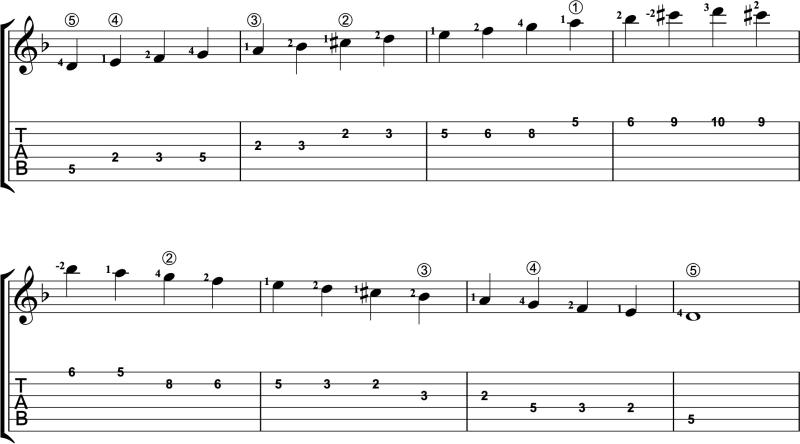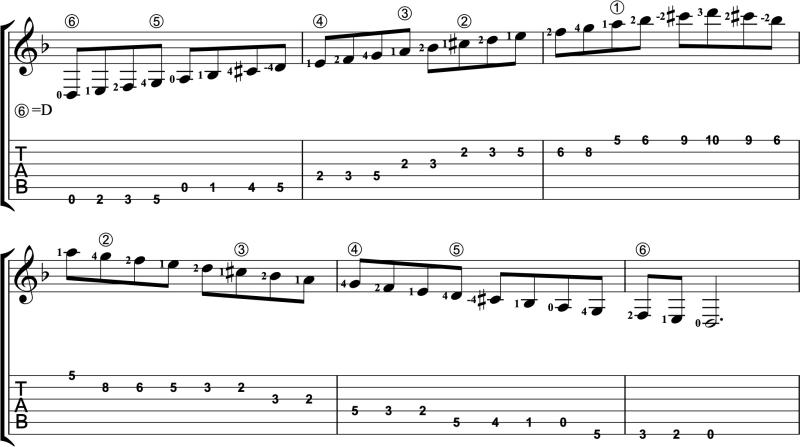Learn the D minor scale on guitar
D minor note names
The scale of D minor has the following note names:
- D
- E
- F
- G
- A
- Bb
- C
- D
Key Signature
The key signature of D minor has one flat, Bb. However, key signatures only tell part of the story with minor scales. Because there are three different kinds of minor scales, there are slight differences in the notes between them.
And in the case of D minor we really want to get used to the D harmonic minor scale. This is a scale that is used in a lot of classical guitar music. The D harmonic minor scale is the same as the notes we looked at above, with one exception. The seventh or “leading” tone of the scale is a C#. For now we’ll just look at the D natural and harmonic minor scales.
One-Octave D minor scale in first position
Let’s look at the most basic D minor scale: a one-octave scale in first position. To start, we’ll play the open fourth string (D). We can reach all of the other notes easily within the first three frets.

Pay close attention to the fingering in the left hand. We have asked you to play the D on the second string with the fourth finger, not the third. While this may feel awkward at first, it helps to keep the hand aligned. As you get more comfortable with your left-hand position, it’s okay to use a 3 instead.
Harmonic minor
Now let’s look at the harmonic minor version of the scale. Remember, it’s exactly the same except for the seventh note: the C is now a C#.

Two-octave D harmonic minor scale
The two-octave scale starts out in second position and shifts us up twice into higher positions.

Three-octave D harmonic minor scale
The three-octave scale requires us to tune the sixth string down to D. This is called Drop-D tuning. Once you reach the D on the fifth string at the end of measure 1, the scale is identical to the previous one.

D minor Scale in Classical Guitar Repertoire
Here are some pieces that use the D minor scale from the classical guitar repertoire:
Originally in C minor, this wonderful prelude by Bach is universally played by guitarists in the key of D minor.
J.S. Bach, Prelude BWV 999
Napoléon Coste‘s “Lesson 24” comes from his revision of Sor’s Method. It is a gorgeous haunting piece in that saddest of all keys, D minor.
Remember how we said there is a Bb in the key signature of D minor? A D dorian scale (a “modal” scale) is the one time you will see B naturals. This Branle Gay from the Renaissance is a great example of D dorian.

Leave A Comment